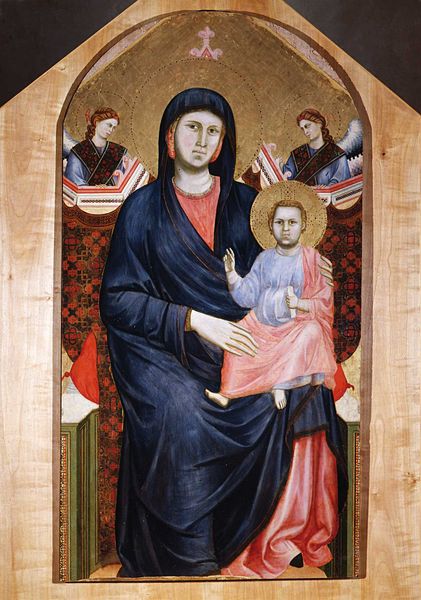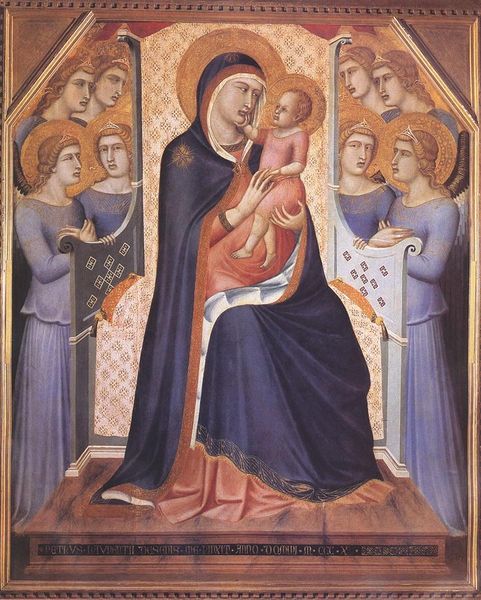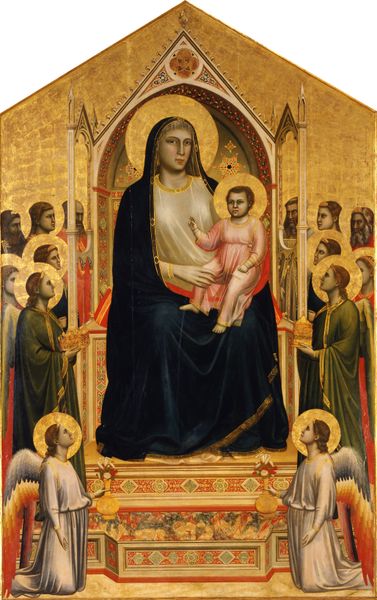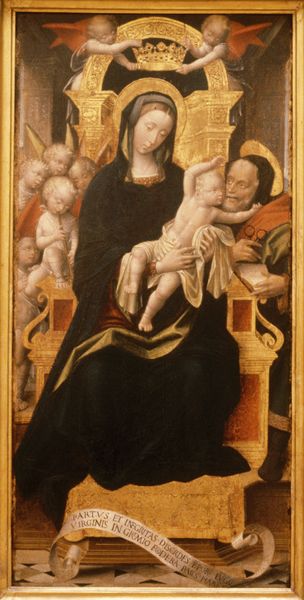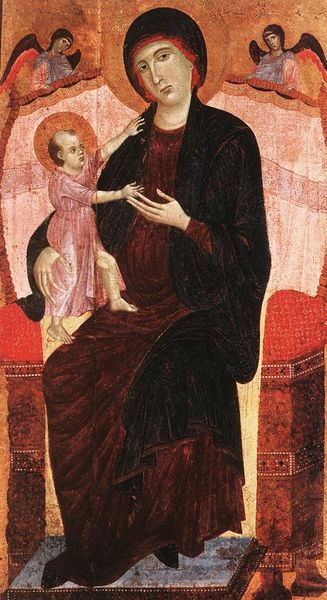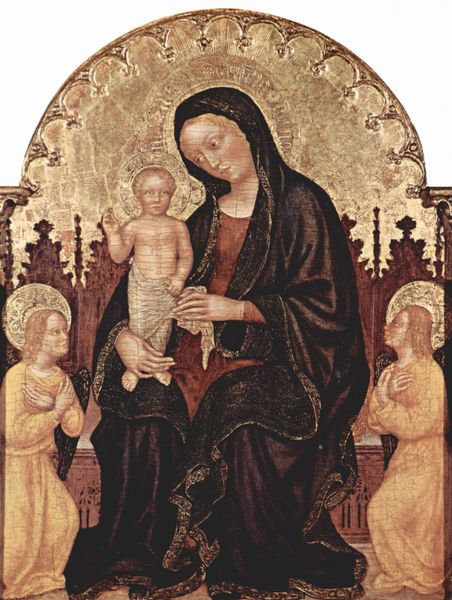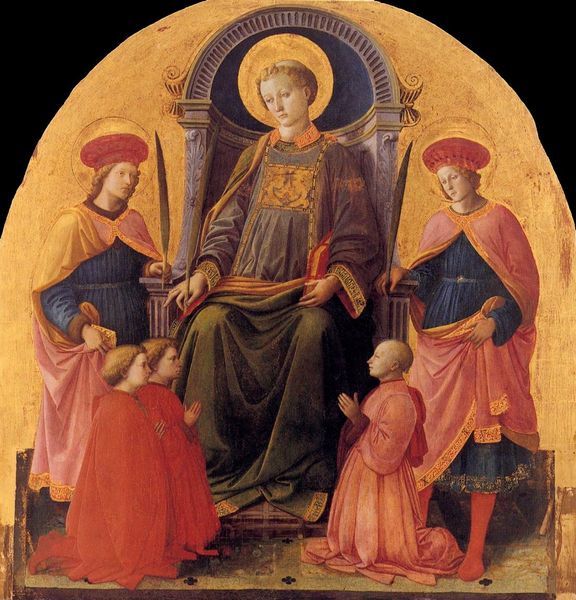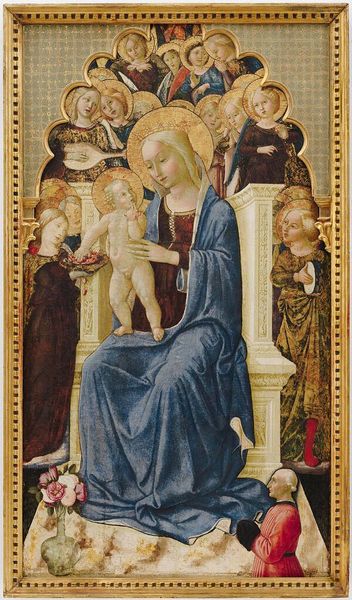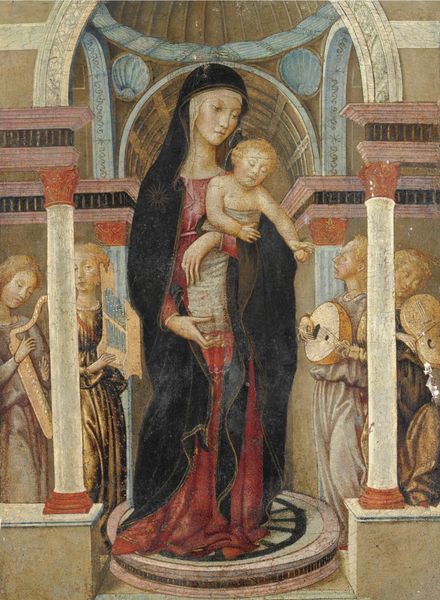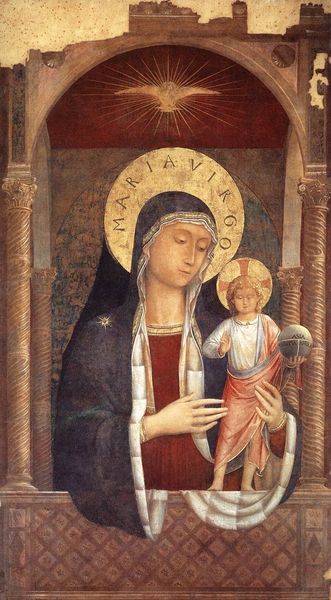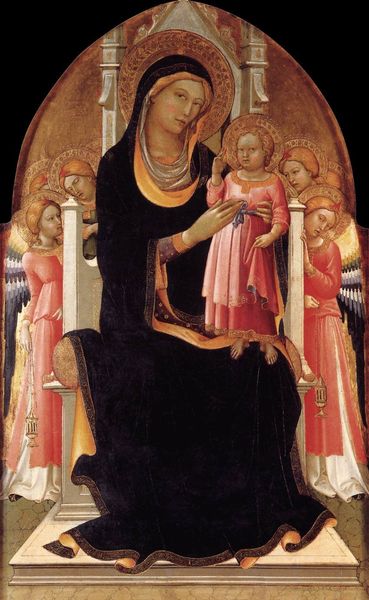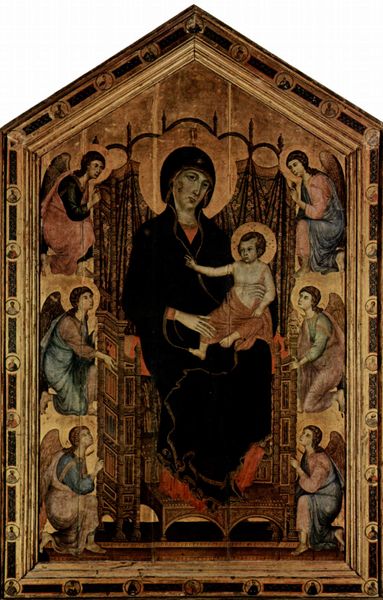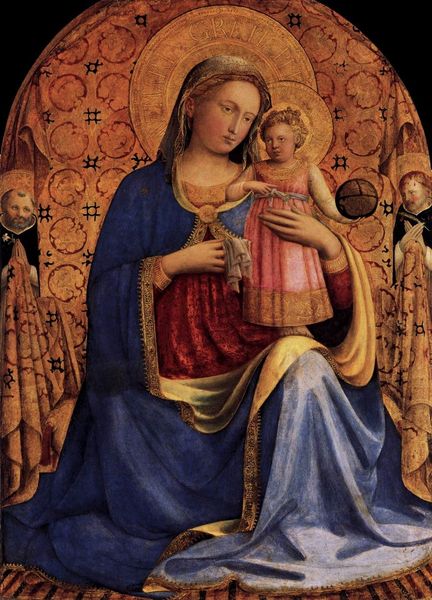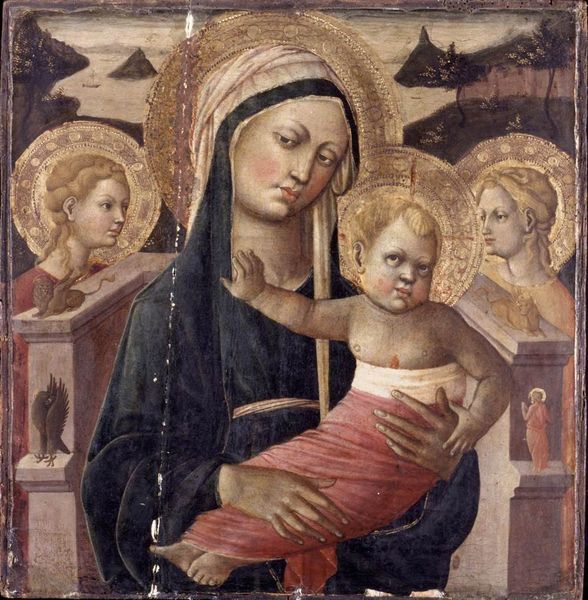
Madonna Enthroned with the Child, St. Francis, St. Domenico and two Angels
0:00
0:00
panel, painting, oil-paint
#
portrait
#
byzantine-art
#
medieval
#
panel
#
painting
#
oil-paint
#
landscape
#
figuration
#
madonna
#
oil painting
#
child
#
christianity
#
italian-renaissance
#
statue
#
angel
Dimensions: 133 x 81 cm
Copyright: Public domain
Curator: Wow, what a powerhouse of an image. All this gold! I am drawn immediately to its almost hypnotic quality, a sort of still gravity. Editor: Agreed, it really pulls you in. What we're looking at is Cimabue’s "Madonna Enthroned with the Child, St. Francis, St. Domenico and two Angels," a panel painting housed in the Uffizi Gallery. It's from that fascinating transitional period in art, where Byzantine conventions met a burgeoning Renaissance sensibility. Curator: Those faces though... so little depth of emotion registers. Everything feels like a flat, symbolic presentation more than an attempt to portray people you might pass on the street. Is it intentional or just an evolving technique at that time? Editor: I think it’s largely intentional. This flatness speaks to a specific understanding of holiness. Notice how the halos flatten into golden disks; it emphasizes divinity but resists pure naturalism. And their gazes... vacant maybe, but consistently directed forward, inviting contemplation from the viewer, always. Curator: Right, it's like looking *through* them, not *at* them. Now the angels. Those flanking figures holding the throne back are interesting, like bookends or ornate props. It’s also strange; there is that Byzantine solemnity paired with something vaguely Roman almost, it strikes me like these people from different times inhabiting the same place. Is it odd, or is it me? Editor: I love that interpretation! You're not wrong—the juxtaposition highlights a fascinating tension. The inclusion of Saint Francis and Saint Dominic grounds the divine scene in contemporary religious movements. See how Cimabue carefully uses hierarchy and placement? These saints and angels exist on different spatial planes, emphasizing their respective roles and importance within the theological framework. Curator: So each element, down to those halos and robes, is a symbol loaded with meaning, telling a theological story. So even though these characters lack individual depth, the total work creates a rich, if somewhat impenetrable, language. Now that you break it down I am staring at it anew! Editor: Precisely. It encourages slow looking, a decoding. These early Renaissance works force us to grapple with a worldview quite different from our own. They show that the evolution of art is deeply rooted in cultural shifts. It feels strange now because so much time passed between us. Curator: It does... So much to unpack here and maybe more layers hidden for other pair of eyes to unlock, huh? Thanks!
Comments
No comments
Be the first to comment and join the conversation on the ultimate creative platform.
